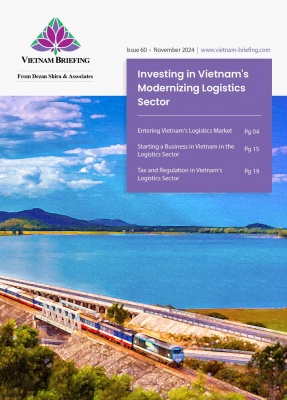Vietnam Government Extends 2% VAT Reduction on Specific Goods and Services till End of June 2025
Vietnam’s National Assembly recently approved the extension of the 2-percent reduction on value-added tax (VAT) to the end of June 2025. Goods and services subject to the 10 percent VAT rate will continue to enjoy the 2-percent reduction in the first six months of 2025.
Vietnam officially extends 2 percent VAT reduction till the end of June 2025
On November 30, 2024, the 15th National Assembly passed the Resolution of the 8th Session, which determined to continue to reduce the value-added tax (VAT) for groups of goods and services specified in Point a, Section 1.1, Clause 1, Article 3 of Resolution No. 43/2022/QH15 on fiscal and monetary policies to support the Socio-Economic Recovery and Development Program.
Previously, Vietnam had extended the VAT reduction from 10 percent to 8 percent until December 31, 2024, as outlined in Decree 94/2023/ND-CP in accordance with Resolution No. 110/2023/QH15. Under Resolution 142/2024/QH15, the Vietnamese Government issued Decree 72/2024 on June 30, providing guidelines for its implementation, which took effect from July 1 and will remain in force until the end of 2024.
Understanding the scope of the 2-percent VAT reduction
The VAT reduction will apply uniformly across all stages—importation, manufacturing, processing, and trading—for eligible goods and services. Meanwhile, goods and services that are not eligible for the upcoming VAT reduction will be the same as previous cuts, which include:
- Telecommunications;
- Information technology;
- Financial and banking services;
- Securities;
- Insurance;
- Real estate business;
- Metal production and production of prefabricated metal products;
- Mining (excluding coal mining);
- Coke production;
- Refined petroleum;
- Chemicals and chemical products; and
- Goods and services subject to special consumption tax.
In addition, Decree 94/2023/ND-CP has implemented a 2 percent VAT reduction on goods and services that were taxed at 10 percent VAT, with certain exceptions. The Decree includes a comprehensive list of goods and services excluded from the 2 percent VAT reduction, detailing specific product codes and HS codes.
Tax reporting and compliance
Companies using the deduction method for VAT declaration must indicate “8 percent” as the VAT rate on invoices for goods and services eligible for the reduced rate. In cases where goods or services are subject to different VAT rates, each rate must be clearly stated on the invoice.
If a seller issues VAT invoices for eligible goods or services at the normal VAT rate without applying the 2 percent reduction, both the seller and the buyer are responsible for adhering to invoicing regulations and adjusting output VAT and input VAT accordingly.
Goods and services eligible for the 2 percent VAT reduction must be declared on Form 01 prescribed in the draft Decree, which must accompany VAT returns upon submission.
Rationale behind the tax cut
Since its implementation on January 1, 2024, the 2 percent VAT cut has proven instrumental in alleviating input costs for businesses across various sectors in Vietnam. It has stimulated domestic consumption, bolstered economic growth, and supported macro-economic stability amid ongoing global uncertainties, including slow recovery in major trading partner economies and disruptions in global supply chains.
According to market watchers, the VAT reduction has directly contributed to stabilizing production and business activities, which in turn has led to job creation and improved living standards. By lowering production costs, businesses have been able to offer competitive prices, thereby further stimulating consumer spending. This policy has been particularly beneficial for sectors such as retail, automotive, and manufacturing.
Financial implications
The latest tax cut is estimated to reduce the state budget’s revenue by about VND 26.1 trillion (US$1.03 billion) when being implemented. Therefore, in the resolution, the National Assembly assigned the Government to be responsible for ensuring revenue and balancing the state budget in 2025.
Strategic considerations for businesses
For businesses in Vietnam, especially those in consumer-facing industries, the extended VAT reduction presents opportunities for strategic pricing and cost management. It is crucial to review pricing structures, supply chain dynamics, and financial planning strategies to maximize the benefits of this fiscal policy measure.
It is advisable for businesses to continuously monitor Vietnam legislative developments and plan for related tax reporting and compliance requirements.
Should you have any questions or require further clarification on how Vietnam’s tax policies may impact your business, please do not hesitate to contact us at vietnam@dezshira.com. We remain committed to assisting you in navigating the complexities of Vietnam’s fiscal policy and optimizing your tax strategy.
This article was originally published June 13, 2024. It was last updated December 2, 2024.
About Us
Vietnam Briefing is published by Asia Briefing, a subsidiary of Dezan Shira & Associates. We produce material for foreign investors throughout Asia, including ASEAN, China, and India. For editorial matters, contact us here and for a complimentary subscription to our products, please click here. For assistance with investments into Vietnam, please contact us at vietnam@dezshira.com or visit us at www.dezshira.com.
Dezan Shira & Associates assists foreign investors throughout Asia from offices across the world, including in Hanoi, Ho Chi Minh City, and Da Nang. We also maintain offices or have alliance partners assisting foreign investors in China, Hong Kong SAR, Dubai (UAE), Indonesia, Singapore, Philippines, Malaysia, Thailand, Bangladesh, Italy, Germany, the United States, and Australia.
- Previous Article Vietnam’s New Internet Regulation: Decree 147/2024
- Next Article Investing in Vietnam’s Modernizing Logistics Sector – New Publication Out
































